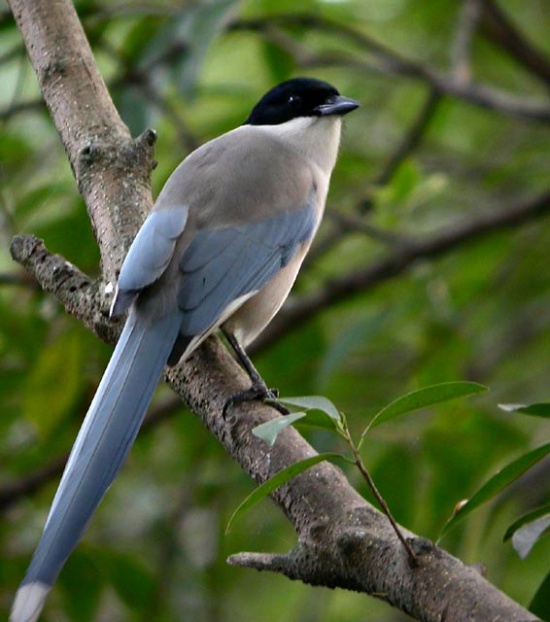
Cyanopica cyana
SUBFAMILY
Corvinae
TAXONOMY
Cyanopica cyana Pallas, 1776, Dauria. Nine subspecies.
OTHER COMMON NAMES
French: Pie bleue; German: Blauelster; Spanish: Urraca de
Rabo Largo.
PHYSICAL CHARACTERISTICS
13.26 in (34 cm); 2.17–2.87 oz (62–82 g). A distinctive bird
with gray to pinkish buff upperparts, black hood, white throat,
pale blue wings, and long, graduated pale blue tail. Bill, legs,
and feet are black.
DISTRIBUTION
Two separate populations. Western
DISTRIBUTION
limited to
Spain and Portugal. May once have been linked with eastern
population, which is distributed widely from Mongolia and
eastern Russia through most of China and Korea to Japan.
HABITAT
Woodland and forest edge. Iberian form found in open country.
BEHAVIOR
Highly gregarious magpie, with parties numbering up to 100
outside breeding season. Stays close to cover in most parts of
its range, although a bold scavenger in Chinese and Japanese
towns and cities.
FEEDING ECOLOGY AND DIET
Insects, fruit, seeds, and berries.
REPRODUCTIVE BIOLOGY
Nests in colonies, with each pair selecting its own tree to
build a stick and twig nest, held together with mud. Generally
lays five to seven eggs March through June; double-brooded
in Far East. Incubation 15 days; fledging about 16 days.
Young adults from previous year’s brood act as helpers feeding
young.
CONSERVATION STATUS
Not threatened. Common and increasing in number over most
of its range.
SIGNIFICANCE TO HUMANS
None known.
Other popular Animals
Photo Gallery of - Azure-winged magpie




 Animalia Life
Animalia Life